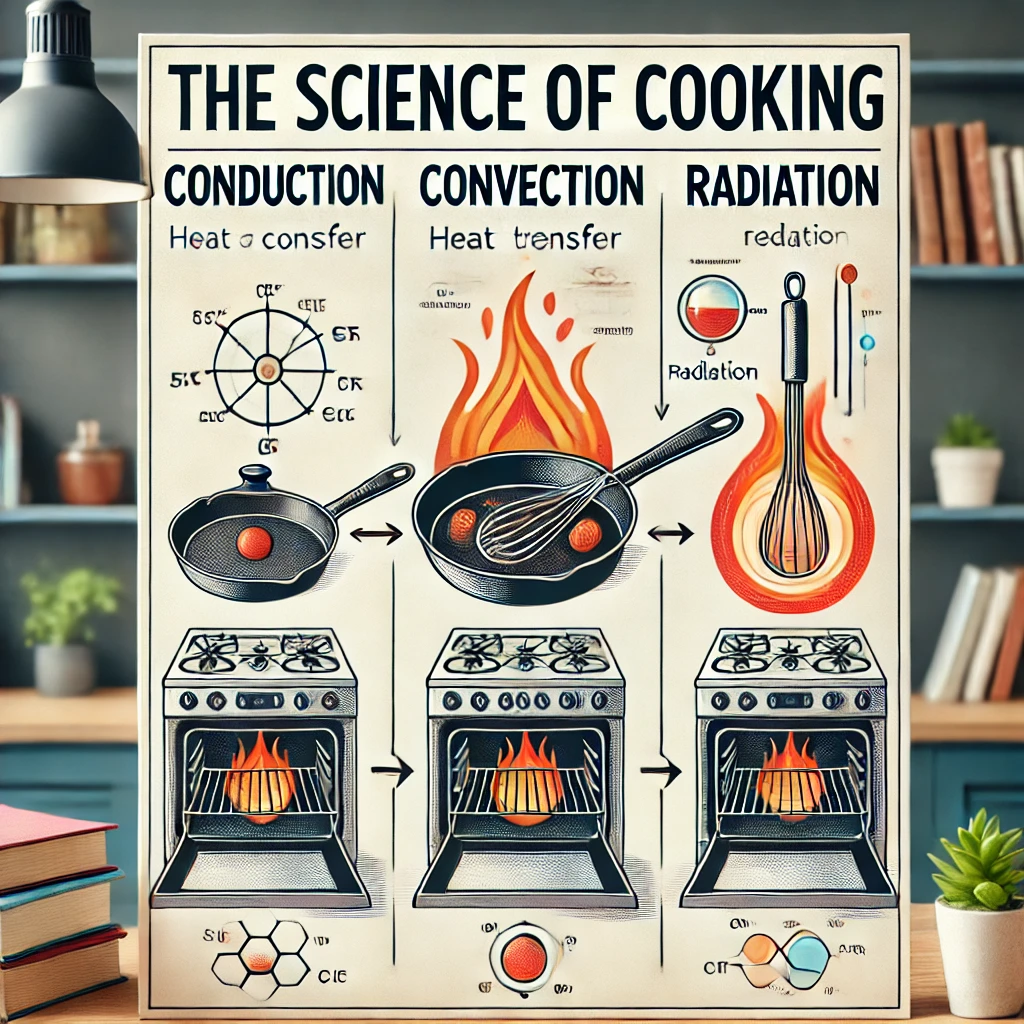Introduction
Cooking is both an art and a science. Understanding how heat affects food can help you become a better cook by allowing you to control and manipulate cooking processes to achieve the best results. In this post, we’ll explore the science behind different cooking methods and how heat transforms food, making it safe and delicious to eat.
The Basics of Heat Transfer
Heat is transferred to food through three primary methods: conduction, convection, and radiation. Each method has a unique effect on food, and different cooking techniques rely on these methods to achieve specific outcomes.
- Conduction
- Definition: Direct transfer of heat from one molecule to another through direct contact.
- Examples: Sautéing, grilling, pan-frying.
- Effect: Conduction heats the surface of the food first, then gradually cooks the interior. This method is ideal for achieving a crispy exterior and a tender interior.
- Convection
- Definition: Transfer of heat through a fluid (liquid or gas), caused by the movement of the heated fluid.
- Examples: Boiling, baking, roasting.
- Effect: Convection circulates hot air or liquid around the food, cooking it more evenly and quickly. This method is great for baking and roasting, as it helps achieve a uniform texture and browning.
- Radiation
- Definition: Transfer of heat through electromagnetic waves without direct contact.
- Examples: Broiling, grilling, microwaving.
- Effect: Radiation cooks food quickly by heating the surface directly. This method is ideal for quickly browning or searing food, creating a flavorful crust.
The Maillard Reaction
One of the most important chemical reactions in cooking is the Maillard reaction. This reaction occurs when proteins and sugars in food are exposed to high heat, resulting in browning and the development of complex flavors.
- Examples: Searing meat, toasting bread, baking cookies.
- Effect: The Maillard reaction enhances the flavor, aroma, and color of food, making it more appealing and delicious.
Caramelization
Caramelization is another crucial process that occurs when sugars are heated, leading to the development of sweet, nutty, and caramel-like flavors.
- Examples: Caramelizing onions, making caramel sauce, roasting vegetables.
- Effect: Caramelization adds depth and complexity to the flavor of food, making it richer and more enjoyable.
Denaturation and Coagulation
Proteins undergo significant changes when exposed to heat. Denaturation involves the unraveling of protein molecules, while coagulation is the reformation of these molecules into a solid or semi-solid state.
- Examples: Cooking eggs, grilling meat, baking fish.
- Effect: Denaturation and coagulation change the texture of food, making it firmer and easier to digest. Properly cooked proteins are tender and juicy, while overcooked proteins become tough and dry.
Gelatinization
Gelatinization is the process where starches absorb water and swell when heated, leading to the thickening of sauces and soups.
- Examples: Making gravy, thickening soups, baking bread.
- Effect: Gelatinization creates a smooth and thick texture in dishes, making them more satisfying and enjoyable.
Conclusion
Understanding the science behind how heat affects food can elevate your cooking skills and help you achieve better results in the kitchen. By mastering different cooking methods and recognizing the chemical reactions that occur during cooking, you can create delicious, perfectly cooked dishes every time.

